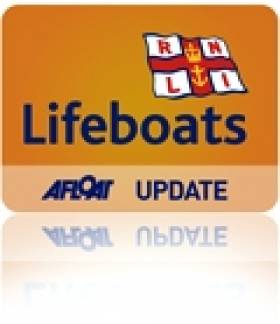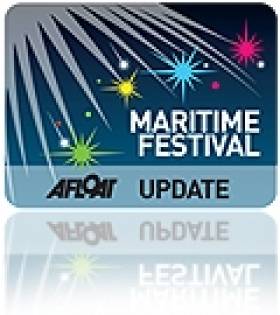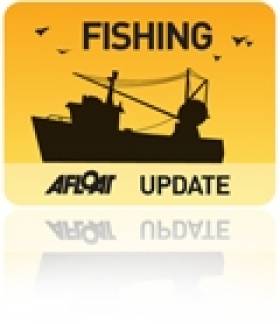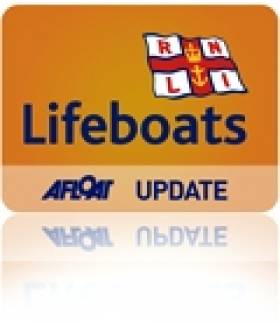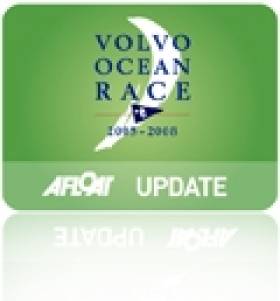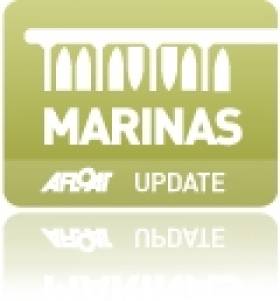Displaying items by tag: Galway
Stranded Students Rescued From Island By Galway RNLI
#RNLI - Galway RNLI came to the rescue of three students who got stranded on Hare Island yesterday afternoon (Monday 13 May) after getting caught in the tide off Ballyloughane Beach.
The two young women and young man, in their late teens/early 20s, had gone for a walk and were spotted waving from the island by a local resident who contacted the emergency services and Galway RNLI.
Conditions at the time (around 4pm) were changeable with heavy showers.
Three volunteer members of the inshore lifeboat crew were working in the vicinity of the station at the time and launched the boat in six minutes.
The three students were picked up safely and brought back to the lifeboat station at Galway Docks where they were warmed up and given tea. They did not require medical attention.
The lifeboat crew on this callout were helm David Oliver, Dara Oliver, David Badger and Olivia Byrne.
Lifeboat shore crew John Bryne said: "The three students did the right thing waiting on the island and not attempting to get off."
It's not the first time that people have been stranded by the incoming tide on Hare Island, as Galway RNLI were called to a similar incident in September 2010.
Galway Expects Crowds For First Sea Festival
#Festivals - "Tens of thousands" of visitors are expected to flock to the City of the Tribes later this month for the first Galway Sea Festival over the June bank holiday weekend, according to the Galway Advertiser.
Dubbed the 'Mini-Volvo' by locals, the four-day event from 31 May till 3 June is hoped to recreate the celebratory atmosphere of last summer's successful Volvo Ocean Race finale, with a wide range of events both on and off the waters of Galway Bay.
Highlights include the festival regatta led by the Galway Bay Sailing Club's parades of sail on the Friday and Saturday evenings, and a traditional boat regatta by Badoiri na Cladaigh.
Watersports enthusiasts can get a taste of canoeing, diving, sea kayaking and windsurfing over the weekend, which also coincides with World Oceans Day - with family-friendly activities at the Galway Atlantaquaria on Sunday 2 June - and the International Canoe Polo Championships at Claddagh Basin.
Preceding the festival on Thursday 30 May will be the Bright Blue Sea Conference, a major international symposium on marine science, renewable energy, the environment and the 'blue economy'.
Last month it was reported that the Galway Sea Festival received the financial backing of Galway City Council, spurred by its aims to promote Galway as a maritime destination or commerce and tourism.
The Galway Advertiser has much more on the festival HERE.
Connemara Oyster Grounds To Lose Disease-Free Status
#Fishing - The Marine Institute is encouraging the agreement of a new code of practice for oyster fishing at Ballinakill Bay in Co Galway, which is set to lose its disease-free status.
Galway Bay FM reports that a single oyster out of 900 tested at the bay, near Letterfrack on the north-west coast of Connemara, tested positive for the Ostreid herpes virus two years ago as part of an EU-supported programme.
Though accounting for just 0.11% of the entire sample, the positive test is enough to strip the area of its clean status.
Senator Trevor O'Clochartaigh raised the issue in the Seanad last week, which prompted the Department of the Marine to confirm that the Marine Institute recommends a code of practice that would see the area's status eventually reinstated.
Galway Port Expansion '99 Per Cent Ready To Go'
#GalwayHarbour - Plans for the expansion of Galway Harbour are "99 per cent ready to go", as the Galway Independent reports.
Eamon Bradshaw, CEO of the Galway Harbour Company, said that the application for the new development would be submitted by the end of June.
As previously reported on Afloat.ie, the scheme will be the first Irish project lodged under new legislation that provides for planning permission on the grounds of "overriding public interest".
Bradshaw says that the necessary Natura Impact Statement has been completed, and economic and financial details were now being finalised for the redevelopment project at the harbour, recently recognised by the Government as a 'port of regional significance'.
Should it get the go-ahead from An Bord Pleanála, the new harbour will extend almost 1km out to sea with 660m of quay berth and plenty of space for cargo and container ships, oil tankers, fishing vessels and passenger ships.
The project will be completed in four phases, with the first €50 million phase extending the port by some 57 acres to accommodate a greater number of commercial ships and modern cruise liners.
Galway City Council recently granted extra time to the Galway Harbour Company for pre-expansion demolition works in the docks area.
The Galway Independent has much more on the story HERE.
Rowing to Celebrate 130th Galway Regatta
#rowingireland – The 130th Galway Regatta will take place on Sunday 16th June 2013 at the NUIG Sports Facilities at Dangan, Galway.
The announcement was made at a recent meeting of the Galway Regatta Committee held at the Galway Rowing Club based at the Waterside in Woodquay, Galway.
The meeting unanimously agreed to elect James Casserly as an Honorary Life Chairman for his outstanding contribution in previous years to the success of the Galway Regatta.
A call was made by the newly elected Chairman John Forde Snr for the people of Galway to once again come along on Sunday 16th June to the pavilion at Dangan and enjoy a great days rowing at this unique of Galway sporting events.
Entries for the Galway Regatta are expected from all four provinces and many of the top rowing clubs in Ireland are likely to participate. Regatta day is always a special event in the Galway sporting calendar and holds an exceptional place in the history of Galway rowing.
Country Home On The River Slaney At A Bargain Price
#Property - A mid-Georgian country house on 50 acres in Co Carlow with its own angler's chalet on the River Slaney is attracting much attention from overseas for its knock-down price.
The Irish Times is singing the praises of Ballynoe House, a two-storey home with seven bedrooms and various additional outbuildings set in "beautiful parkland with good pasturage" - perfect for its owners Willem and Anneke Savelkouls who bred horses and kept sheep on the land.
The house itself comprises 850 sqm of floor space, the ground floor featuring a sizeable reception hall plus two high-ceilinged reception rooms with large windows, an open plan kitchen/living area and a study.
Upstairs can be found a master suite, five family bedrooms sharing two bathrooms and a guest suite with shower. Another bedroom is located in the basement, which features a games room, wine cellar, office space and a housekeeper's apartment.
Outside, the walled garden at the rear includes a swimming pool and pavilion added by noted architect Sam Stephenson when he was a resident in the 1970s, as well as a disused tennis court that a resurfacing would bring bang up to shape.
One big selling point is the property's prime waterfront location along a 2km stretch of the River Slaney, providing for some top-class salmon and trout angling.
Previously on the market for almost €4 million, Ballynoe House today is a snap for all you'll get at an asking price of just €1.24 million.
Viewing is by appointment only with agents Sherry FitzGerald. The Irish Times has more on the property HERE.
On the slightly more modest end of the scale, Collerans Auctioneers in Galway are handing the sale of 114 Ocean Wave in Salthill, a four-bed detached home close to the famous promenade for €460,000.
According to the Galway Advertiser, the house offers "beautiful views" of Galway Bay from the master bedroom on the first floor (completed by three en-suites).
On the ground floor, generous living and office space plus separate entrances lend the property to use as a GP practice or similar.
Clifden RNLI To Trial New All-Weather Lifeboat
#RNLI - The RNLI has announced that Clifden lifeboat station in Co Galway is to receive an all-weather class lifeboat for a trial period of 12 months to operate in conjunction with the existing inshore lifeboat service.
The decision, which will see the volunteer crew take delivery of a carriage-launched Mersey class lifeboat, was made this week when the charity’s trustees accepted the recommendation of its operations committee. It follows an in-depth review of lifeboat cover in the area.
The RNLI carries out a five-yearly review of lifeboat stations, looking at the incidents they launch to and the changing pattern of marine activities to ensure the existing and future lifeboat coverage is appropriate.
All-weather lifeboats can be operated safely in all weather conditions while inshore lifeboats usually operate closer to shore, in shallower water, close to cliffs, among rocks or even in caves.
Introduced as the RNLI’s first fast-carriage lifeboat, the Mersey class has a top speed of 17 knots. Designed to operate from a carriage, slipway or lie afloat, this class of lifeboat is also capable of being self-righted in challenging conditions.
The Mersey - which can carry a lifeboat crew of six - also carries an X boat, a small unpowered and manually launched inflatable daughter boat to allow the crew to access areas where the lifeboat cannot reach.
Last year, Clifden RNLI launched eight times bringing seven people to safety. Of those launches, two services were in the dark. In all, some 82 service hours were spent at sea.
A lifeboat station was established in Clifden in early 1988 and the station currently operates two inshore lifeboats.
Clifden RNLI lifeboat operations manager John Brittain said the crew were "delighted" at the decision to trial the new lifeboat in the Galway town.
"The new boat will allow us to provide lifesaving cover in all weathers up to 100 miles off the Connemara coast," he said. |This is a significant investment by the RNLI and we are excited to be trialling a Mersey class lifeboat."
RNLI divisional operations manager Owen Medland added: "Our charity’s priority is to save lives at sea and by conducting regular reviews of lifeboat cover around our coastline, we can ensure we provide the best possible search and rescue service.
"After careful scrutiny, the RNLI feels that an all-weather lifeboat may be suited to the service launches that Clifden volunteers get tasked to. The co-location of the new lifeboat for a trial period of 12 months will allow us to assess the long-term value for this type of lifeboat while ensuring that any change at Clifden means the right type, balance and capability of the lifeboats are operating in this location to respond to emergencies."
The timescale for the arrival of the all-weather lifeboat has yet to be confirmed but will coincide with the training of the volunteer lifeboat crew to meet the demands of the new vessel.
Lorient Stopover Completes Next VOR Race Route
#VOR - Lorient in France completes the route for the next edition of the Volvo Ocean Race.
Like last year, the Brittany port city will be the penultimate stopover for the race fleet when they sail in at some point in mid June 2015.
But rather than a return to Galway, the race will continue on to the new finish line at Gothenburg in Sweden - as announced by race organisers in February.
“This route has never really been part of any ocean race any time before,” said Volvo Ocean Race CEO Knut Frostad. “And when you have that element there’s a new strategy, there’s a new route, there’s new weather, there’s new challenges for the sailors.
"That is exciting, not only for us but for the sailors because no-one can claim they’ve done this before.”
The 12th edition of the Volvo Ocean Race begins on 4 October this year with the first in-port race in Alicante.
In other VOR news, Team SCA has selected the first five members of its all-woman team for the global yachting challenge.
Britons Sam Davies and Annie Lush will be joined by Dutchwoman Carolijn Brouwer and Aussie par Sophie Ciszek and Liz Wardley on the squad that marks the first female-only crew in the race for more than a decade.
Galway Harbour Co Gets Extra Time for Pre-Expansion Works
#GalwayPort - Galway Bay FM reports that the Galway Harbour Company has been given extra time by city councillors for the demolition of buildings in the docks area to make way for the upcoming port expansion.
Planning permission was granted five years ago for the removal of the Centre Pier building, which had been earmarked at the time as the location for a media centre for last summer's Volvo Ocean Race finale.
Now the Galway Harbour Company has three more years as it seeks further planning permission for the first phase of its expansion plans, as previously reported on Afloat.ie.
Galway City Marina. Yacht & Boat Berths & Storage in Galway
Galway City Marina is situated in the confines of Galway Harbour and is operated by the Galway harbour company. Freshwater and electrical power is available at the pontoons. Power cars can be purchased from the harbour office during the day and also from a local pub 'Bar 8' on dock located on Dock Road. A number of visitor pontoons are available for hire during the summer and for winter layup. Sailors intending to call to Galway Harbour should first make contact with the Harbour office to determine if a berth is available, as demand is high in this quiet and beautiful part of Ireland.



























